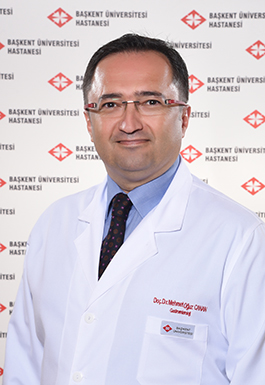I. Esophagus, Stomach, and Intestinal Diseases in Children
a. Conditions related to reflux (recurring vomiting, wheezing, cough, and hoarseness)
b. Swallowing difficulties (dysphagia), allergic esophagus diseases, esophageal strictures
c. Stomach pain, heartburn, and abdominal bloating (suspected gastritis-ulcer)
d. Persistent long-term constipation (chronic constipation)
e. Persistent long-term diarrhea (chronic diarrhea and malabsorption syndromes) (Infectious enterocolitis, celiac-cystic fibrosis-allergic/eosinophilic and autoimmune intestinal diseases)
f. Upper and lower gastrointestinal system bleeding (hematemesis, melena, and hematochezia)
g. Chronic bloody diarrhea
h. Recurring and unresolved abdominal pain
ı. Acute and chronic pancreatitis
i. Inflammatory bowel diseases (Crohn's disease-ulcerative colitis) (persistent colitis)
J. Familial Mediterranean fever
II. Liver and Gallbladder - Biliary Tract Diseases in Children
a. Prolonged neonatal jaundice and cholestasis syndromes (biliary atresia, breast milk jaundice, cholestatic jaundice, infectious and metabolic liver diseases)
b. Investigation of unexplained liver enzyme elevations
c. Unexplained liver-spleen enlargement
d. Gallstones and biliary tract stones (surgery required for multiple stones or a single stone larger than 1 cm)
e. Viral hepatitis
f. Chronic liver diseases (Wilson's disease, autoimmune and metabolic liver diseases, diagnosis, treatment, and monitoring)
g. Diagnosis and monitoring of simple liver steatosis and steatohepatitis in children
h. Severe acute liver failure (advanced hepatic coma, often requiring liver transplantation)
Liver transplantation (preparation for transplantation and subsequent monitoring)
Portal hypertension and hypersplenism
III. Nutritional Disorders
a. Growth retardation-failure to gain weight
b. Obesity
c. Swallowing difficulties, allergic oral intake problems
d. Recurrent vomiting
Diagnostic and Treatment Methods Used in Our Department
1. Upper gastrointestinal system endoscopy and mucosal biopsy
2. Ileo-colonoscopy and mucosal biopsy and polypectomy
3. Liver biopsy (sampling for tissue copper, parenchymal and mass biopsy)
4. Percutaneous transhepatic cholangiography (PTC)
5. Abdominal ultrasonography and abdominal MRI
6. Abdominal CT angiography
7. Percutaneous endoscopic gastrostomy (PEG)
8. Esophageal variceal band ligation
9. Polypectomy
10. Submucosal adrenaline injection and argon laser intervention in bleeding patients
Procedures
Upper GIS Endoscopy: Performed under general anesthesia, a flexible tube with a camera is inserted through the mouth to examine the esophagus, stomach, and the entrance of the small intestine (duodenum). Mucosal biopsy can be done if necessary. This is a low-risk procedure, primarily a visual diagnostic method, not a surgical intervention. The visual appearance and biopsy results are evaluated together for a more reliable diagnosis.
Ileo-colonoscopy: Similar to the upper GIS endoscopy but performed through the rectum under general anesthesia to visually examine the entire large intestine and the last part of the small intestine. Mucosal biopsies and polypectomy (non-surgical closed polyp treatment) can be performed if needed.
For endoscopy, fasting is required, while for colonoscopy, a 3-day diet and bowel-cleansing syrups are necessary.
Liver Biopsy and Percutaneous Transhepatic Cholangiography (PTC): Safely performed in our interventional radiology department by experienced specialists or faculty members, under ultrasound guidance. Patients are monitored pre- and post-procedure and are typically discharged after a day's observation.
Frequently Asked Questions
1. Recurrent Vomiting-Reflux Disease
In children, especially in the first year of life, 40-60% of vomiting is caused by reflux. However, for it to be considered reflux disease, vomiting must be of certain severity and frequency, related to feeding, and worsen in a lying position. The possibility of allergic esophagus patients exhibiting reflux-like symptoms should be kept in mind. Food allergies should be considered first in treatment-resistant reflux cases. Persistent vomiting may also be caused by conditions such as pyloric stenosis, congenital upper intestinal system rotation anomalies (malrotation), and esophageal strictures.
2. Persistent Constipation
Constipation is the most common cause of non-feverish abdominal pain in children. It is especially common between ages 1-3, coinciding with picky eating and toilet training. Nearly 95% of chronic constipation cases are functional (stool withholding-fear) without any underlying organic disease. Treatment is often resistant, with voluntary anal sphincter tightening being a major cause of treatment failure. Another common reason is the premature discontinuation of laxative (stool softening) therapy, which should last at least 6 months, and not adjusting the dosage according to stool consistency.
3. Diagnosis and Treatment of Celiac Disease
Celiac disease is common worldwide, including in our country. It is the world's most prevalent and lifelong non-resolving food allergy. Accepting that the disease won't go away and adhering strictly to the diet is crucial. The only effective treatment is a lifelong gluten-free diet. Diagnosis requires positive serological celiac tests from blood and positive findings from an endoscopic duodenum biopsy. There is a significant number of children misdiagnosed with this condition. Celiac disease should be considered in unexplained abdominal and headache pain, unexplained liver enzyme elevation, chronic constipation and diarrhea, growth retardation, all resistant iron deficiency cases, and in the presence of other autoimmune diseases like Type 1 diabetes and Hashimoto's thyroiditis.
